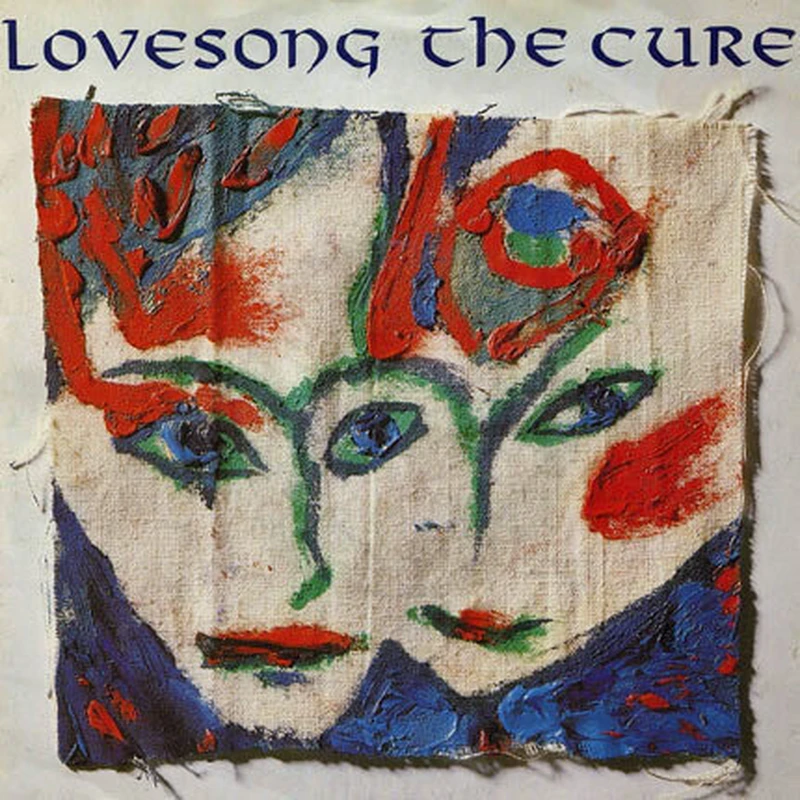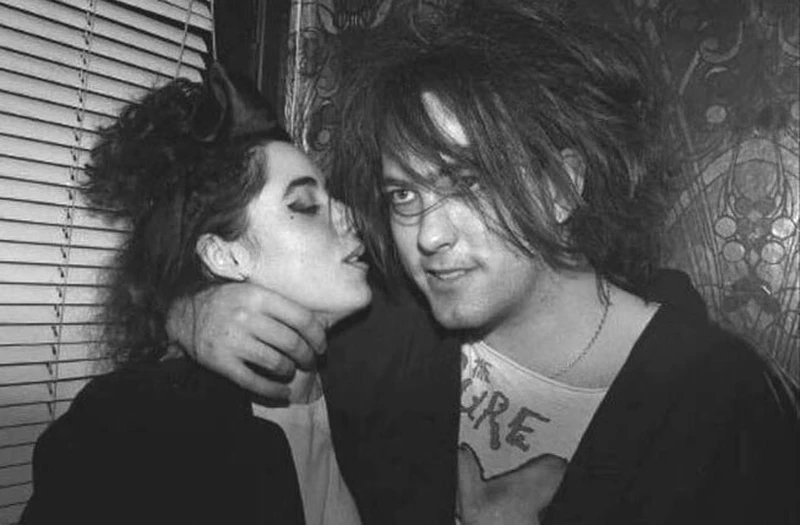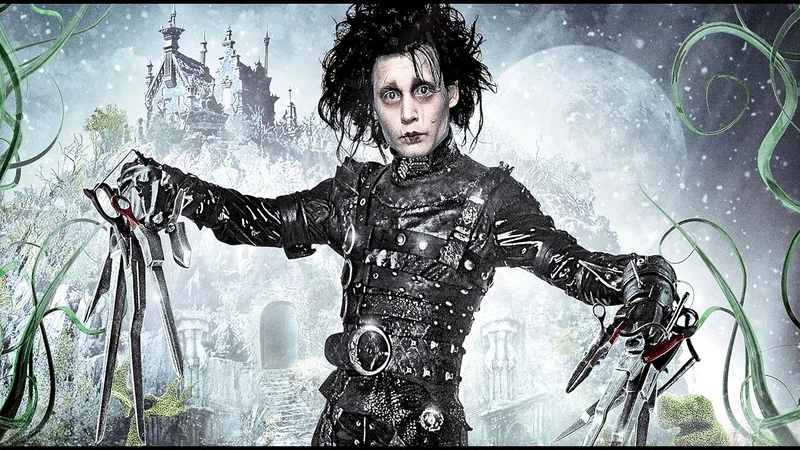Stable Medicine for Troubles
This November in the global music world unfolds under the old and well-proven brand of “The Cure.” Even unofficially, the number of mentions of one of the most influential bands of the late last century is truly off the charts. The main reason is that on November 1st, the band’s fourteenth studio album, *Songs of A Lost World*, was officially released. As often emphasized, it’s their first release in sixteen years. This event was a perfect opportunity to look around and ask: what year is it now? With war, general fatigue, mental health struggles, and our iron patience on the matter, this is hardly surprising. It’s also comforting to hold on to the British band The Cure as a symbol of stability—not only in music but in general. I wouldn’t be skeptical about the theory that as long as this band exists, the world hasn’t completely fallen into the abyss; at the moment, this theory clearly holds true. It’s no coincidence we’re dealing with a band whose name, in one meaning, translates as “Healing.”

Mentioning time is deliberate here because we have a clear example of how it seems powerless for some. Let’s leave aside the clichés about the greatness of this British band, its special contribution to music culture, and especially its significant influence on several generations. But if we dive into such terminology, for the past 45 years The Cure have consistently been with us: in the 1980s (their best work—albums like *Faith*, *Pornography*, and *Disintegration*—came out then), the 1990s (albums *Wish* and *Bloodflowers* deserve special praise), the 2000s (they released two interesting albums and stayed creatively active), in 2018 they loudly reminded us of themselves on their 40th anniversary, and the following year embarked on a world tour featuring the cult album *Disintegration*. I witnessed how work in Ukrainian offices stopped so people could watch in real time Robert Smith and the band playing material from thirty years ago in Australia. And now a new decade, a new album. An interesting trend: as soon as the first singles from the new material appeared, old and classic The Cure songs started playing more around. Let’s recall some together.
Mr. and Mrs. Smith
On August 13, 1988, in a Benedictine monastery in Sussex, the lead singer of the world-famous rock band The Cure, Robert Smith, officially married his chosen one, Mary Poole. The newlyweds are almost the same age (Mary is slightly older) and met when Robert was 14 and Mary was 15. It happened during a school drama class where students had to find partners. That’s how they found each other, and they haven’t parted since.

Robert proposed to Mary a year earlier—right at work, so to speak, without stepping away from the workbench. It happened in the studio during the recording of the album with the expressive title *Kiss Me Kiss Me Kiss Me*. Like most rockers, especially those of a gloomy gothic style, Smith and his bandmates had a peculiar attitude towards the wedding ceremony. “It didn’t change anything in our relationship,” he later said in an interview, “we got married simply because we wanted to have a nice day, so Mary could walk down the aisle in a white dress; it was also great to gather our relatives together.” In another interview, the musician confessed: “It was a bit stupid, but we needed to get through it.” The wedding indeed took place in a traditional, almost family atmosphere, with close friends of the newlyweds and The Cure musicians present, without extra eyes from journalists or fans.

The rocker planned to give his future wife a wedding gift—and what could it be? It could be anything, but Robert Smith gave Mary a song. Later, it became a hit and one of The Cure’s most successful singles. Just like that: “It’s a tape with a new song, my gift to you, here you go.” Mary ran to her room to listen to the present immediately. Afterward, she rushed out, and as Smith recalled, almost smothered him with kisses.
Everyone’s Enchanted by Mary
Every time, just being alone with you,
I feel like I’m home again.
Every time, being next to you,
I’m in peace and harmony with myself.
A very simple and accessible message, probably the best words to express feelings to a loved one. Likely, this is Smith’s most straightforward and open text, without metaphors or associations, as he joked: “Cheap and from the heart.”
And wherever life takes me,
I will always love you.
And no matter how long I stay there,
I will always love you.
Whatever words I say,
I will always love you.
I will always love you.
“I just wanted to write a song about love, so it’s called ‘Lovesong.’ Instead of making up all sorts of symbols, I wrote it as if I was just talking to someone,” Robert Smith later reflected. Any artist will confirm that there’s nothing harder than writing the simplest and most understandable love song—and making it a hit. But even in the most sincere and straightforward expression from their idol, fans found allusions and references: the line “Fly Me To The Moon” evokes constant associations with the jazz standard of the same name from the 1950s, most famously performed by Frank Sinatra. By the way, this year the American film *Fly Me to the Moon* was shown in local cinemas, featuring this very song as its leitmotif.
However, the music video for the song had a controversial story. Everything seemed proper: Robert Smith in all his gothic glory, resembling Edward Scissorhands from Tim Burton’s film with matching makeup and hairstyle, in a magical cave, but looking very sad. As if he had hidden in a corner, sitting still without movement. Part of the problem was that the author asked the video director, Tim Pope, to remove as much of his usual irony as possible because this is not just a love song, it’s a confession of love.
Eventually, Smith called this video almost the worst in the band’s history. And to be honest, he wasn’t very fond of the song itself or its sudden success. “I think it’s the weakest song on the album,” he reflected in an interview, “but somehow it ended up second on the US singles chart. Only someone like Janet Jackson was higher. And I was exhausting myself thinking—out of all the songs I wrote, only this one breaks through to the top.” He was disappointed.
Robert Smith’s chosen one can also be seen in another The Cure video for the song *Pictures of You*, where she appears in their joint photos, which the song is dedicated to. And in the video for *Just Like Heaven*, Robert and Mary dance together above a seaside cliff, with Mary in her wedding dress.
By the way, rumors say that the Edward Scissorhands character for Johnny Depp was inspired by the iconic image of Robert Smith at the time, and the American director Tim Burton even supposedly offered The Cure’s frontman to write the movie’s soundtrack. But while Smith and The Cure were true authorities for the American director, Robert didn’t know who Tim Burton was yet and had to decline the offer.

Fifty Years of Kisses
“The first concert I ever attended was The Cure’s show in Finsbury Park, London,” singer Adele replied when asked why she decided to cover the song *Lovesong*. “My mom was a big fan of the band and took me with her to the show.” Adele also recalled that Smith’s image then scared her a bit, bringing to mind Edward from Tim Burton’s film. The British singer, who became a global sensation in 2011 with her album *21*, included her deeply moving version of the song, which was warmly received at her performances.
A very different mood and interpretation of the hit were seen in the American band 311’s version, who twenty years ago delivered *Lovesong* to the masses in a rather original manner, thanks to Adam Sandler, who included their version in the soundtrack of his light romantic comedy *50 First Kisses*. According to the author’s concept, the entire soundtrack consists of iconic 1980s hits, but reinterpreted by other artists. Moreover, since the film is set in Hawaii—a generally cheerful and relaxed atmosphere—these covers were mainly done in reggae and Caribbean rhythms. You may wonder how such a serious romantic song was made so relaxed? These guys somehow managed:
Robert and Mary have lived in a happy marriage for over 36 years, and if you add the time they knew each other before marriage, it’s almost half a century. When once asked by a reporter what moment from his life he would like to relive, The Cure’s lead singer answered, “Our first dance with Mary.” He also once said, “She’s my Cindy Crawford.” The song *Lovesong* also has a long life and was always performed during anniversary tours. How else could it be—it’s already a full-fledged member of the Smith family.

